Category: Cardinal Quarter
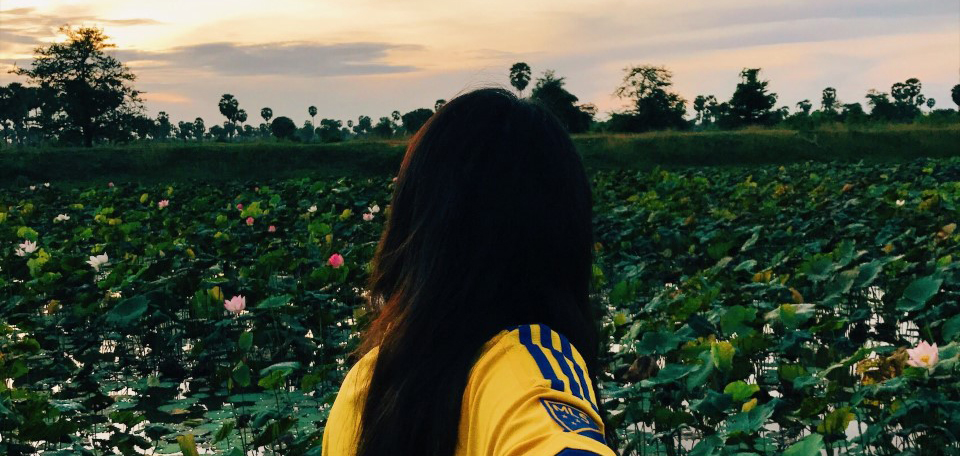
Learning Cultural Humility in Rural Cambodia
By Amy Kouch, BS ’19, MS ’20
“I would love to live here,” I said in awe, staring at the glorious sight before me.
I was working and living in a rural village in Cambodia. A friend from the village and I were sitting in an endless grassy field, having just finished soccer, a slight breeze cooling off the sweat dripping down our faces. The sun was beginning to set over the lotus ponds, the sky erupting in warmth, kissing the pinks of the petals and contrasting the deep greens of the leaves. There was something so peaceful about resting here with room to think and to spend evenings talking to someone who grew up on the opposite side of the world. I was away from the busyness, experiencing something so simple and so beautiful.
My friend turned toward me with a curious expression on his face.
“If you lived here, you would be spending hours working in the fields, not watching the sun set.”
I was taken aback by this truth. Suddenly, I was aware of how easy it can for outsiders in this community to romanticize a life of simplicity, to be drawn to place like rural Cambodia with good intentions to make an impact.
In the summer of 2017, I interned with Sarus, a nonprofit organization that focuses on peace-building for students from countries with a history of conflict.
There were every day hardships and issues that persisted for those who lived there, such as the absence of resources for education, the lack of running water, of reliable electricity—aspects that I took for granted living in a developed and industrialized economy. I also realized that these were the problems I wanted to help solve.
But I was an American visitor, an outsider in this community. In one month, I would return home. I took this moment to assess what more I could do.
What did this community need? How can I go beyond my internship and create real change and address issues that the community cares for? What does it mean to practice ethical and effective service throughout a lifetime?

Amy Kouch is a coterminal master’s student in Civil and Environmental Engineering with a bachelor’s in human biology. In summer 2017, she interned with Sarus through the Community Arts Fellowship. She was a member of the Public Service Honor Society, a year-long cohort of that provides seniors the opportunity to reflect on their public service and develop their civic leadership identities. She also interned at the Office of Sustainability and was a member of the Stanford Khmer Association and Sigma Psi Zeta sorority. She is from Rohnert Park, CA.
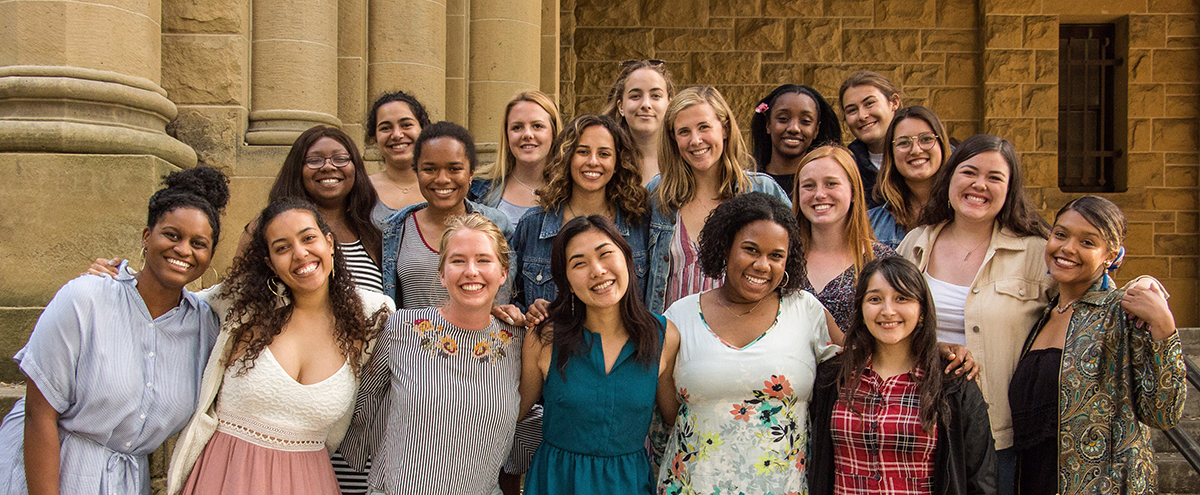
Reflecting on Four Years of Cardinal Service
By Callan Showers, ’19
The Cardinal Service initiative began my freshman year, in the fall of 2015. I am so thankful I made a lasting service commitment right away, by joining a Cardinal Commitment organization called Women and Youth Supporting Each Other (WYSE).
The Stanford women in WYSE facilitate weekly mentorship sessions for middle school girls in East Palo Alto and discuss topics like puberty, women’s empowerment, race and discrimination, and sexual health.
I was persuaded to apply because it seemed like a way for me to expand my sense of community and purpose at and around Stanford. This couldn’t have been truer. Engaging with the East Palo Alto community and its middle schoolers through WYSE has taught me innumerable lessons about cultural humility, community action, education justice, and leadership.
I also had the chance to engage with the broader Bay Area through the Cardinal Course, From Gold Rush to Google Bus: History of San Francisco. We worked with a community partner to identify little-known stories about the city’s history and write articles for an online historical database. I got to nurture intellectual interests through experiences such as digging through archives in the San Francisco Public Library, while also contributing to a community-based project with lasting impact. It also helped me realize that you don’t have to be from a place to help shape its history.
While these experiences connected me to parts of the local area, Cardinal Service programs also helped me serve in the place I have always called home: Minnesota.
The summer after my sophomore year, I received the Advancing Gender Equity Fellowship from the Haas Center and Women’s Community Center to work as a legal intern at Gender Justice, a public interest law firm in St. Paul. Gender Justice represents clients who have experienced gender discrimination or sexual harassment, and I got an inside look into legal proceedings such as depositions, while also getting the chance to draft policy advocacy memos and see the inner workings of a nonprofit.
This Cardinal Quarter inspired me to pursue public interest law because of how well it fit my skills and my desire to make change. I am pursuing a two-year position as a paralegal at a civil rights law firm in Washington, D.C. I truly believe without the values of community-engaged learning experiences and the way I saw my personal and professional values and skills align at Gender Justice, I would be less prepared to enter into this work and my life beyond.
 Callan Showers, ’19, was in the first class at Stanford to experience four years of Cardinal Service. She co-led the student organization Women and Youth Supporting Each Other (WYSE). Callan also completed a Cardinal Quarter with Gender Justice, a nonprofit law firm, and a Cardinal Quarter from the Bill Lane Center for the American West serving with the French cinema house Galatée Films.
Callan Showers, ’19, was in the first class at Stanford to experience four years of Cardinal Service. She co-led the student organization Women and Youth Supporting Each Other (WYSE). Callan also completed a Cardinal Quarter with Gender Justice, a nonprofit law firm, and a Cardinal Quarter from the Bill Lane Center for the American West serving with the French cinema house Galatée Films.
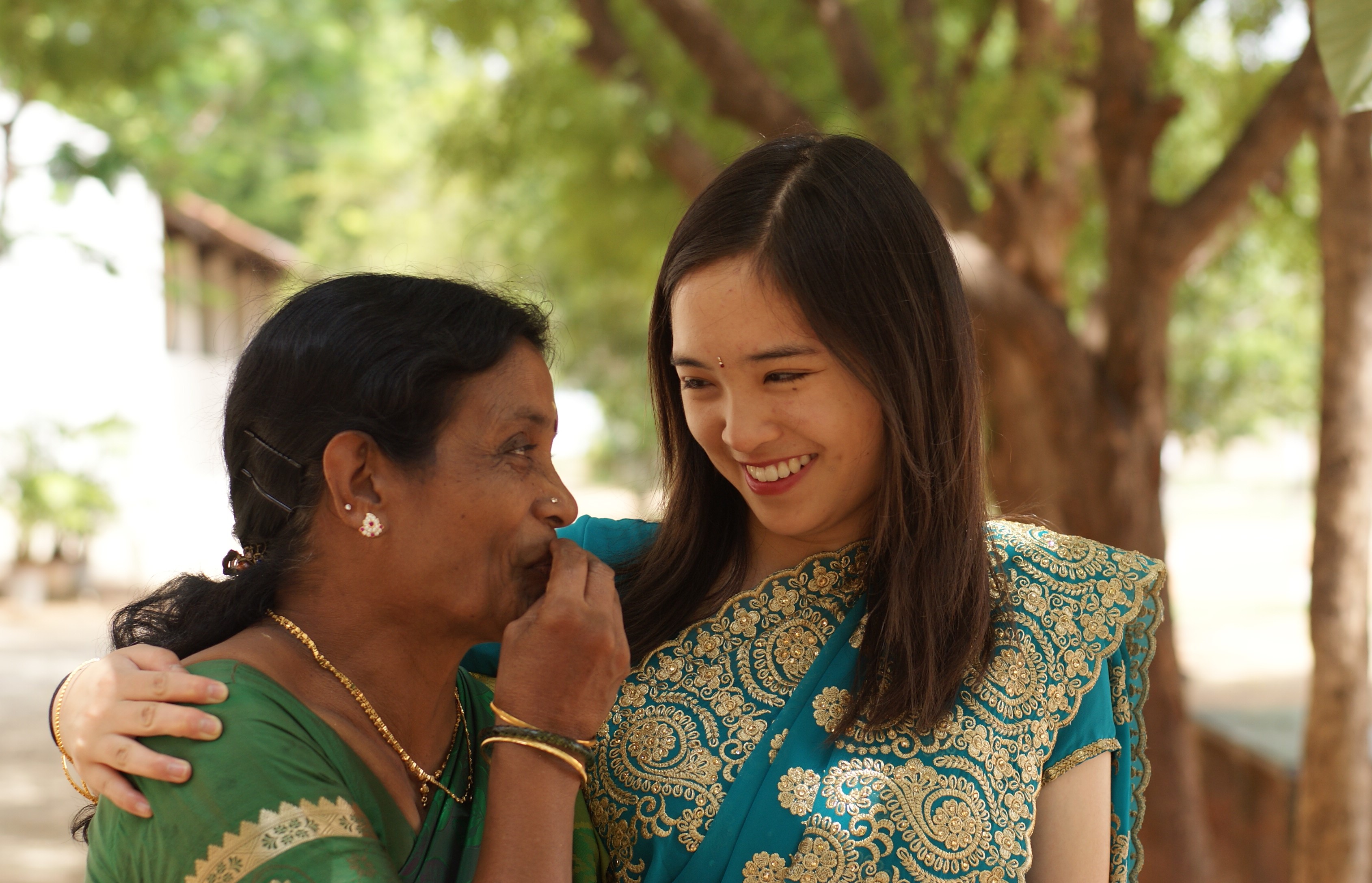
Updating My Views: On Science Education and Life in Rural India
By Catherine Wang, ’21
Last summer I had the extraordinary opportunity to spend eight weeks teaching at the AGN School in Tamil Nadu, India. As a Cardinal Quarter fellow with Project Dosti, I taught science for middle and high school students and helped implement an interdisciplinary curriculum that emphasized the excitement of real-world problem-solving. My experience was a reminder of how much I love biology, as I had found it difficult to maintain the same enthusiasm for the subject during the cyclical grind of the school year. But in Tamil Nadu, I ended each day with my body covered in chalk dust, my voice hoarse, and my smile too big for my face.
I’ve always been passionate about STEM education, so I think a lot about how science can be taught better and made more accessible, especially biology. When I arrived, I saw that the students’ textbooks were outdated and did not emphasize real-world applications of the basic sciences. In response, I designed new lessons that introduced cutting-edge biology research, some of which originated at Stanford. One of my favorite lessons was about how CRISPR gene-editing technology could potentially be used to cure many of the diseases that the students already knew. Because they had only memorized a list of genetic disorders, they had never seen the impact of such diseases and the ways that basic biological mechanisms could be harnessed to treat them. I taught different versions of this material to students from 8th to 11th grade, scaling the level of detail accordingly. No matter what age the students were, their minds were blown.
When I reflect on my experience in Tamil Nadu, I realize that just because communication is efficient and hot water comes out of the tap doesn’t mean American culture is superior. As I saw it, the culture in the rural village where I lived was a lot less isolating and more communal than what I was used to in the United States. This was apparent in the language—kids called each other “brother” and “sister,” and teachers called each other “sister” and “mother.” There were also fewer formalities in everyday speech, so people would ask me deeply personal questions that allowed them to get to know me better, more immediately.
I spent two nights staying in an art teacher’s rooftop home. She was widowed and by all definitions extremely poor, but her life was full of color and simple joy. Whereas I had accepted a relatively nomadic life in the United States, families in the village had lived there for many generations. My art teacher knew her neighbors well and children from the village poked their heads into her home every few hours.
My time in India made me reevaluate my identity as an American and as a Stanford student. I began to measure myself in more mundane but important ways—as a friend, creator, and teacher, rather than a three-point-something GPA student destined to jump through progressively more demanding academic hoops. Though I went there to provide a more modern education, I learned something that neither the latest scientific nor technological advancements could ever teach: a view of life that values community, hospitality, and human connection. I hope to take this with me on all my future adventures.
Catherine Wang is a pre-med student studying biology and art practice. Through Cardinal Quarter, Catherine joined five other Stanford students to serve in India with Project Dosti. She is from Lexington, Massachusetts.
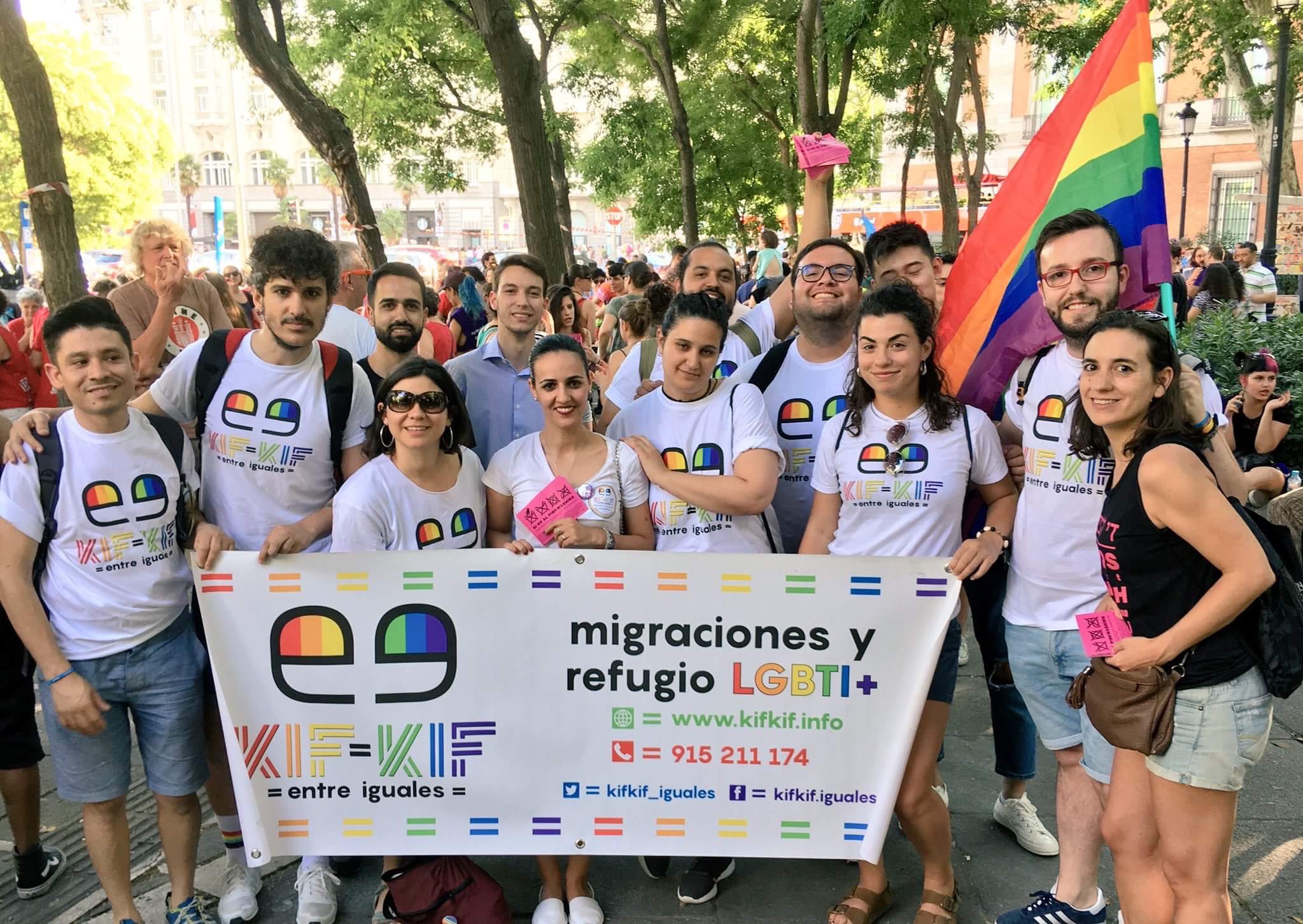
Queer Migrant Experiences: Exploring Self and an International Community
By Alan Arroyo-Chavez, ’19
The warm summer air kissed my face as I sat on a tree-shaded hill watching the sun set between la Catedral de la Almudena and el Palacio Real. Who would have thought that a boy from Tracy, California would end up basking in the orange madrileño sun?
Then again, this was my second time in the city. When I first came to Madrid, Spain in 2017 through the Bing Overseas Studies Program, the city charmed me with its architecture, liveliness, and people. I didn’t think I would return, but then I was offered the Halper International Summer Fellowship to work with Kifkif, a nonprofit organization whose mission is to provide aid to queer immigrants in Madrid. People who seek help from Kifkif come from Europe, Latin America, and Northern Africa; they speak English, Spanish, French, Italian, Romani, and Arabic.
Immediately, I was put to work transcribing interviews that my supervisor, Florencia Rivaud, had conducted to shed light on queer immigrants’ experiences coming to Spain. In these interviews, I heard about queer people being extorted because of their identities and Latinx trans women being ostracized. I was shocked by the hardships that the people interviewed went through. However, these same people made a home for themselves in a new country, came to terms with their identities, and maintained positive attitudes. Many of these immigrants and their children return to work for Kifkif to help others settle in Madrid.
Listening to their stories forced me to break through the veil of comfort that living in the United States created. As a queer Mexican man, I see the community of queer refugees in Madrid as part of my own broader Latinx and queer community. However, we differ in a key way. In the United States, despite its own shortcomings, I can be open with my friends and my loved ones, and this safety is a privilege that I took for granted.
Laws and cultures around LGBT issues in places like Spain shift over time. Spain decriminalized homosexuality in 1979 soon after the fall of the Franco regime, legalized same-sex marriage in 2005, and instituted penalties for discrimination based on sexual orientation. (In comparison, there are still jurisdictions in the United States that protect an employer’s right to dismiss an employee based on sexual orientation). Because Spain has risen as one of the countries most accepting of LGBT people, Latin Americans immigrate to Spain. This migration is complicated and ironic given that these immigrants seek refuge from violent dynamics that Spain established in the first place.
I think a lot about how after 1492 Spain imposed Catholicism in Latin America, establishing rigid gender roles and solidifying hetero-patriarchal dynamics among indigenous peoples and their mixed descendants. Those dynamics continue to affect my community, including myself.
Though it continues to be difficult to unpack the relationship that my Latinx communities will always have with Spain, this Cardinal Quarter experience has been a gateway to learning more about the human rights issues that queer people face internationally. I hope to continue learning about the experiences of queer immigrants from countries outside the United States so that I can better connect with communities I consider my own.

Alan Arroyo-Chavez is majoring in Comparative Studies in Race and Ethnicity. He is a member of the Public Service Honor Society, a year-long cohort that provides seniors the opportunity to reflect on their public service and develop their civic leadership identities. In 2018, he completed a Cardinal Quarter in Madrid, Spain with Kifkif, an aid organization for queer immigrants.
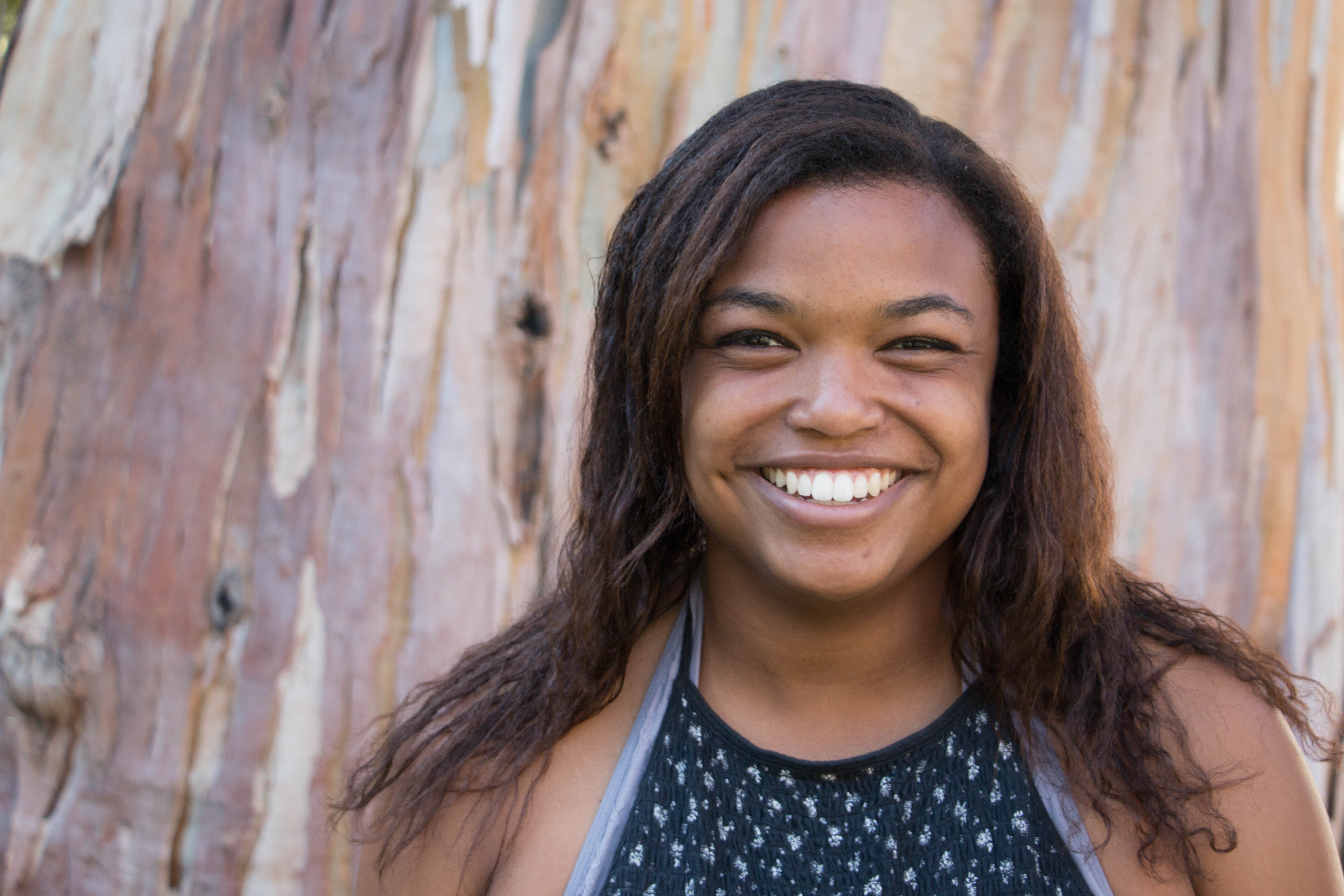
Who Tells Their Stories: Questions of Ethics and Agency at the Southern Border
By Jenn Ampey, ’19
The room was tiny and filled with more people than the fire code allowed. Giant cameras stood on tripods at various heights, but all of them were tall enough to block my view.
I was attending a press conference for parents looking for children who had been taken from them by Immigration and Customs Enforcement (ICE). It was only my second day of work with Hope Border Institute, a human rights advocacy organization on the southern border, but already the whirlwind that was summer 2018 had swept me up; every day brought news of changes to U.S. immigration policy and the deepening insecurity for asylum-seekers under the Trump administration. In the crowd stood reporters from the Washington Post, CNN, and Telemundo. Microphones from the newspapers and networks sat atop their cameras, pointing at ten parents sitting in a line across the front of the room. They took turns speaking.
This press conference was my first (but not last) visit to Annunciation House, a shelter for recently arrived immigrants that was quickly becoming the center of media-to-parent interaction under the outspoken leadership of the director, Ruben Garcia. Struggling to balance engagement with the media and his desire to protect the newly arrived immigrants under his care, he stood nervously at the front of the room. As reporters jostled in front of me, I realized that many of them didn’t speak Spanish. On the other hand, the parents waiting to speak to us did not speak English.
Accepting the fact that I would never be able to see, I settled into my spot against a wall to listen, occasionally glancing up at the camera monitors overhead to get a picture of who exactly was speaking. My supervisor, Edith, stood next to me as farm labor leader Dolores Huerta arrived to take the seat that we were saving for her in the back. She lasted about five minutes of not being able to see anything before she stood up and made her way quietly through the crowd to the front, where she could look directly into the faces of the parents.
A father spoke emotionally about missing his son, eventually breaking down and sobbing at the table, while Ruben’s hand rested on his shoulder. In that moment, I noticed something that would preoccupy me for the rest of the summer. As the man cried harder and harder, the sounds of hundreds of camera shutters filled the air. It was a hot day, but I felt a chill crawl down my spine. Bile rose in my throat, and I turned my head away. For the rest of the press conference, I stared at the ground and tried to hold back angry tears and take in everything I could at the same time.
When the press conference finished, I helped my supervisor field translation requests from reporters who only spoke English but still wanted individual interviews with the parents. Eventually, we left and walked back to the car. I slid into the passenger’s seat with a migraine throbbing from the emotions of the day. A tear slid down my cheek and mixed with the sweat from Texas’s harsh summer heat. Day 2 of 45.
Jenn Ampey, ’19, is an international relations major with a minor in human rights, from Rockville, Maryland. She is the Cardinal Service Peer Advisor team lead and member of the WSD Handa Center for Human Rights and International Justice Student Advisory Board. After graduation and a gap year, she hopes to earn a joint law degree-journalism masters’ degree and help find better ways to tell the stories of survivors of human rights abuses, largely as a result of her Cardinal Quarter experience on the border.
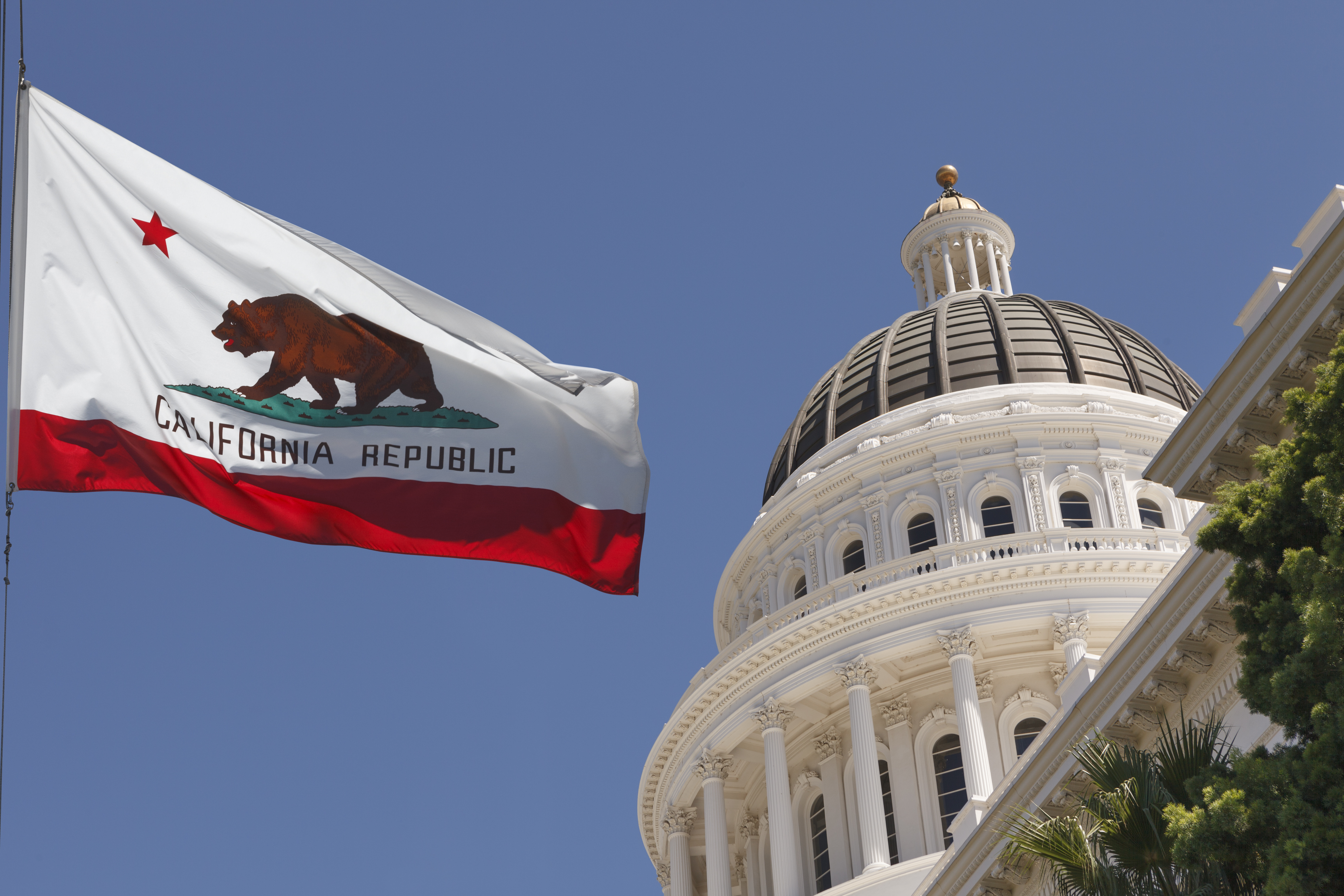
The Global and Local Conversations About Agricultural Conservation
By Kyle Van Rensselaer, ’19, MA ’20
What happens when you pave over a garden? The consequences are fairly small. How about when unchecked urban development paves over tracts of fertile agricultural land?

In a state like California, a major breadbasket for the United States, such changes can threaten food security, land conservation, and farmer welfare. These are pressing issues that the California Department of Conservation’s Division of Land Resource Protection (DLRP) is aware of, and that I was able to help tackle during my Cardinal Quarter in summer 2018.
During my time as a fellow, one of my major assignments was a research project looking into unique agricultural policies in other countries, namely the Netherlands and Israel. My research contributed to a longer white paper that was presented at a UC Davis symposium on climate change in September 2018, which was itself affiliated with the well-known Global Climate Action Summit in San Francisco.
The white paper discussed Californian agriculture broadly and paid particular attention to agricultural conservation in the face of climate change. The Netherlands and Israel, as I discovered through my research, are notable because they prioritize agricultural productivity and sustainability in their legal and economic structures, albeit in much different ways.
Despite having a high population density, the Netherlands has an incredibly efficient agricultural sector that invests in innovative practices such as urban rooftop gardens, large-scale greenhouses, and public engagement with sustainable farming. Israel, on the other hand, caught our attention because 93 percent of its agricultural lands are owned and leased out by the central government, creating an interesting dynamic between free-market impulses and traditional conceptions of how national land should be used.

Although reading about these international programs was fascinating in itself, my team and I were most interested in how the policy prescriptions in the Netherlands and Israel could be applied to California law.
In particular, DLRP is interested in expanding and improving its conservation easement program. This program is designed to promote agricultural conservation by bringing farm owners, land trusts, and the California state government together to protect private farmland from development into perpetuity. I was lucky to visit some of the farms that have signed conservation easement contracts and are therefore committed to conservation efforts on their own properties. These visits were a great learning experience because I was able to see how the Department of Conservation builds dialogue with key stakeholders: the farmers who keep California’s agriculture sector alive and running.
The partnership between DLRP and private landowners gave me insights about community engagement and cultivation. Despite political divides, the government and its stakeholders can find common ground and achieve mutually beneficial outcomes.
In particular, many farmers in California support the Republican Party and, as such, tend to be more skeptical of the environmental policies that lawmakers in Sacramento actively pursue. However, DLRP’s conservation easement program has generated buy-in among these farmers because all parties agree on the relevance of supporting agriculture in the long-term.
My research project seemed more relevant when considered alongside these takeaways from the field: while public ownership of farmland, as in Israel, would be a hard sell in the United States, the targeted investments into agricultural sustainability such as those that the Netherlands makes are much more palatable for farmers in the Californian Central Valley. Witnessing DLRP’s role as mediator between lofty policy goals and actual hands-on implementation of farmland conservation was an opportunity to see how the government can bring together diverse stakeholders, and even unusual allies, to preserve a way of life for generations.
Kyle Van Rensselaer, ’19, MA ’20, is an international relations major, chemistry minor, and coterminal student in international policy. He is the historian for the chemistry fraternity Alpha Chi Sigma, head writer for Stanford Chaparral Magazine, a peer chemistry tutor for the Vice Provost for Teaching and Learning, and a member of the Stanford Axe Committee. He is from Auburn, CA.
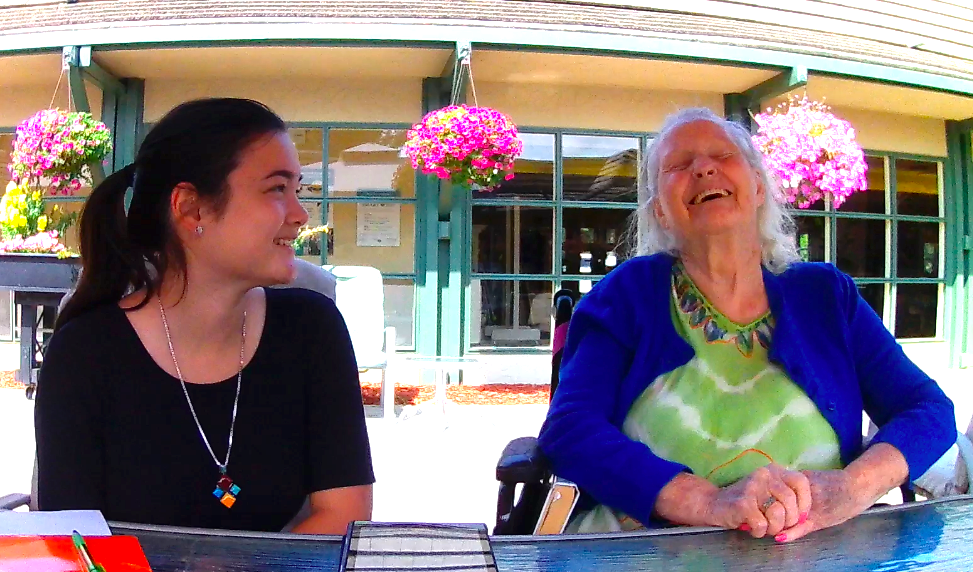
Music, Laughter, and Joy: A Summer of Therapeutic Music in Senior Living Communities
By Samantha Starkey, ’19
Research shows that singing has beneficial effects on the mood, cognition, and health of older adults. These findings are the basis of my placement organization last summer, SingFit, a Los Angeles-based startup that uses technology to make therapeutic music more widely accessible for older adults. During my time interning with SingFit, I saw how one-on-one and group therapeutic music sessions in senior living communities enhance the well-being and social engagement of older adults.
At one of my group sessions at a memory care facility, there was a gentleman who at first seemed confused and disgruntled.
“I can’t sing. I don’t know the words. I can’t even hear properly,” he complained.
As time went on, he began singing along with the group, and he would suggest songs from musicals like West Side Story, once gracing us with a brief rendition of “Maria” in a mellifluous tenor voice.
One day, we sang the Andrews Sisters song, “Beer Barrel Polka.” Most songs have associated dance moves to encourage movement, and we all repeated the “Beer Barrel Polka” move throughout the song: pretending to drink a mug of beer. Afterward, with a deadpan face, he looked at me and mock-sternly cried, “You’re over your limit!” The whole group giggled.
That gentleman was just one of the many people who had a profound impact on me this summer. Working with him made me realize that patience, respect, and music can bring out talents, humor, and joy in people.
Sam Starkey is a senior studying human biology and education. Samantha served as a Roland Longevity Fellow with SingFit. At Stanford, she has been involved in several Cardinal Commitment student organizations, including Side by Side, The Bridge, and Ravenswood Reads. She is from Vancouver, Canada.

Organizing alongside the ‘Beloved Community’: Police Accountability from the Grassroots
By Evander Deocariza, ’20
This summer I completed a Cardinal Quarter with PACT (People Acting in Community Together), a multiracial, multi-faith grassroots organization based in San Jose, CA. PACT has a small staff of about 10 organizers who empower people around Santa Clara County to fight for housing justice, immigration justice, and law enforcement transparency and accountability within their communities. Rather than speak for community members who are most directly impacted by policies, PACT teaches them how to build power and take action in the public arena for themselves.
Through PACT, I had the opportunity to learn by doing. I primarily worked with the organization’s Beloved Community team, which focuses on issues of police accountability. We met with city officials and coordinated a media campaign that successfully convinced San Jose’s mayor and city council to pursue an ordinance expanding the Office of the Independent Police Auditor, which independently investigates policy misconduct complaints. I also worked one-on-one with community leaders to help them develop the skills and tools to conduct their own research into policing policy reform.
Working at PACT changed my understanding of what a good organizer does. Initially, I conceived of an organizer’s leadership through the lens of my military experience. After serving five years in the Marine Corps as a cryptologic linguist, I was very used to working within a hierarchical structure. In the military, there is a clearly delineated chain of command, and orders come from the top. Leaders are responsible for creating a plan, issuing orders, and supervising subordinates to ensure those orders are carried out. With this idea of leadership in mind, I thought an organizer galvanized a community and delegated tasks for others to carry out as part of a strategic plan that they formulated.
The language PACT uses to describe roles suggests how very wrong I was: paid organizers are referred to as “staff,” while the community members who volunteer to work on issues are called “leaders.” I learned that organizers teach leaders; leaders organize. That is, staff teach and guide leaders in developing skills like how to schedule meetings with public officials, how to chair meetings, how to publish Op-Eds, etc. Organizers work in the background to enable community members to speak and act for themselves.
Though I don’t see myself as particularly well-suited for a career in organizing, I now understand how people power is generated through organizing. I appreciate its potential to create lasting, societal change from the ground up.
Evander Deocariza, ’20 (Computer Science), served in the U.S. Marine Corps from 2011-16, and transferred to Stanford from San Diego Mesa College in fall 2017. Evander was one of more than 500 students to complete a Cardinal Quarter in summer 2018.
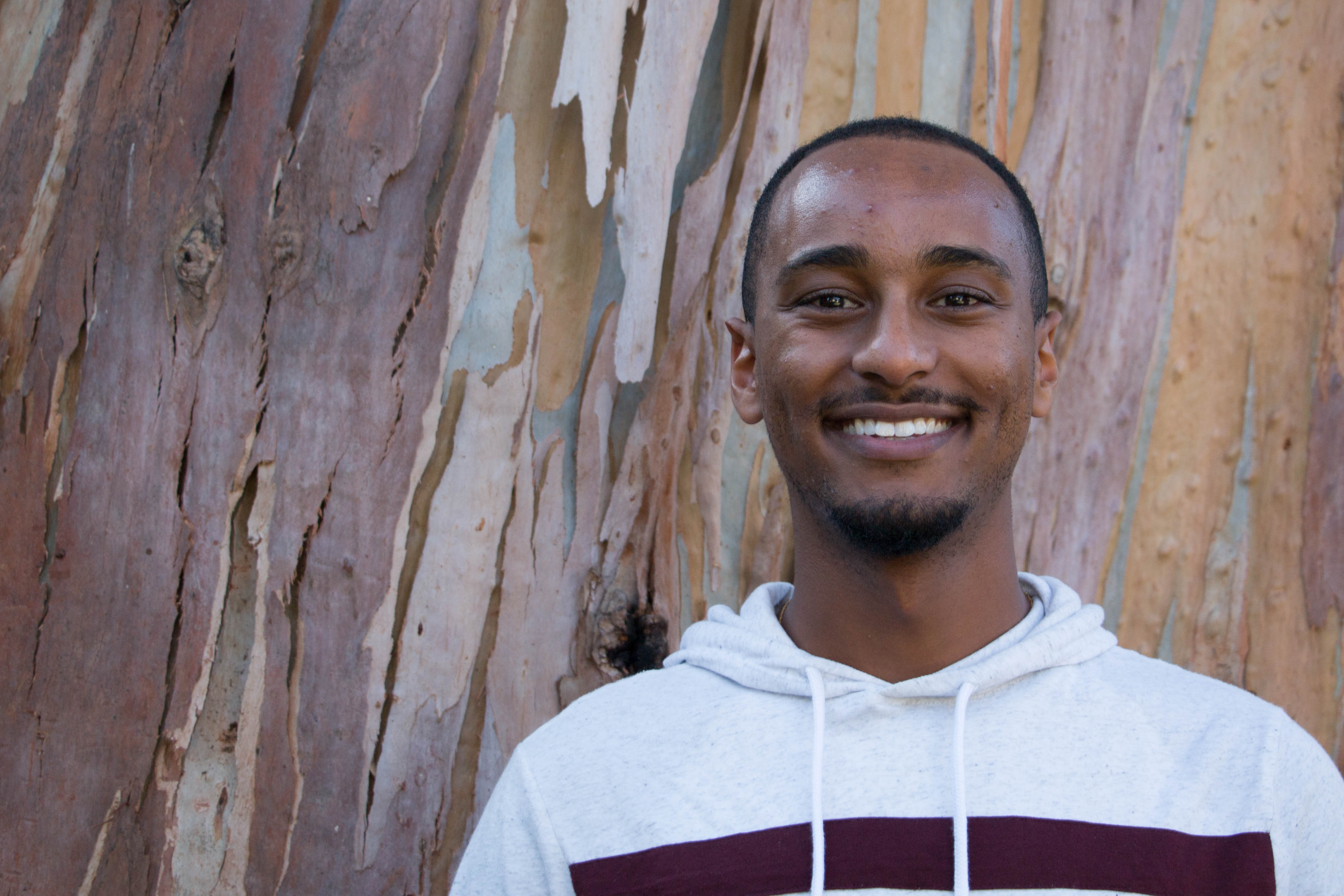
Corresponding with Criminal Justice: Letters that Brought Me Hope
By Samuel Feineh, ’19
It wasn’t until the summer after my sophomore year, through my second Cardinal Quarter opportunity, that I became more confident in who I am and what I stand for.
During summer 2017, I interned at the American Civil Liberties Union’s National Prison Project, which is dedicated to reforming prison conditions nationwide. In 2014, the ACLU filed a 34,000-person class action lawsuit against the Arizona Department of Corrections (ADC) for violating a number of inmates’ constitutional rights. After a long legal battle, the ADC agreed to reform its health care system, limit the use of solitary confinement, and provide greater access to mental health resources. When I arrived, the ACLU was monitoring the department’s compliance.
As part of the class action lawsuit, inmates could send letters to the ACLU. I spent most of my time responding to each inmate who wrote to us to supply them with resources to help them file their own lawsuits, seek medical help, or file a grievance in prison.
Hundreds of inmates wrote. Some had simple requests, and others revealed the horrid prison conditions they faced.
Reading these letters was at times straightforward, and at other times, heartbreaking. There were countless stories about inmates being denied medical coverage by private contractors, and as a result, facing life-or-death situations. In one letter, a prisoner wrote that a prison guard raped a severely mentally ill inmate, yet no investigation was undertaken.
While there was much to be frustrated about, I learned something so important from my colleagues at the ACLU: when you want to change a corrupt system, you have to start somewhere. And after you start, you keep fighting.
I spent hours on each letter, combing through the inmates’ files to send as many resources as possible. I also scrutinized thousands of documents—including medical reports and use-of-force logs—that the ADC sent us to ensure that they complied with various class action stipulations.
As part of this review process, I analyzed prison temperature logs. Each of the 15 ADC state prisons had to record the temperature at set times every day, compile the data, then send it to the ACLU each month. These records helped the ACLU ensure humane conditions in the facilities, especially in the summer months when temperatures sometimes exceeded 100 degrees Fahrenheit. The logs were routine and usually unsurprising, though we wondered if the prisons were falsifying the data because most of the temperatures ranged between 80 and 90 degrees. We had no way of proving deceit, until I found the proof.
One day, while reviewing the last few pages of one state prison’s report to the ACLU, I noticed that the facility had filled in temperature data for six dates that came after the date they had sent us the logs. The ACLU team provided the information to the judge, and swift action was taken to punish the ADC.
Witnessing how evidence is leveraged to administer justice further revitalized my hope in prison reform: through rigorous analysis, I played my part as a watchdog and made a difference.
When I came home each night to the Stanford in Washington house and told my new friends about my work, I felt my newfound sense of purpose seep into the conversation. This experience left me believing I am a change agent, and I’m excited to continue nurturing my passion. I am emboldened to keep fighting.
Samuel “Sam” Feineh is a 2018-19 Cardinal Service Peer Advisor. During the summer of his freshman year, Sam received a Cardinal Quarter to intern for his Congressman on Capitol Hill. This year, he also serves as the vice chair of programming for Stanford in Government and co-president of the Stanford Black Pre-Law Society. He is originally from Sacramento, CA.
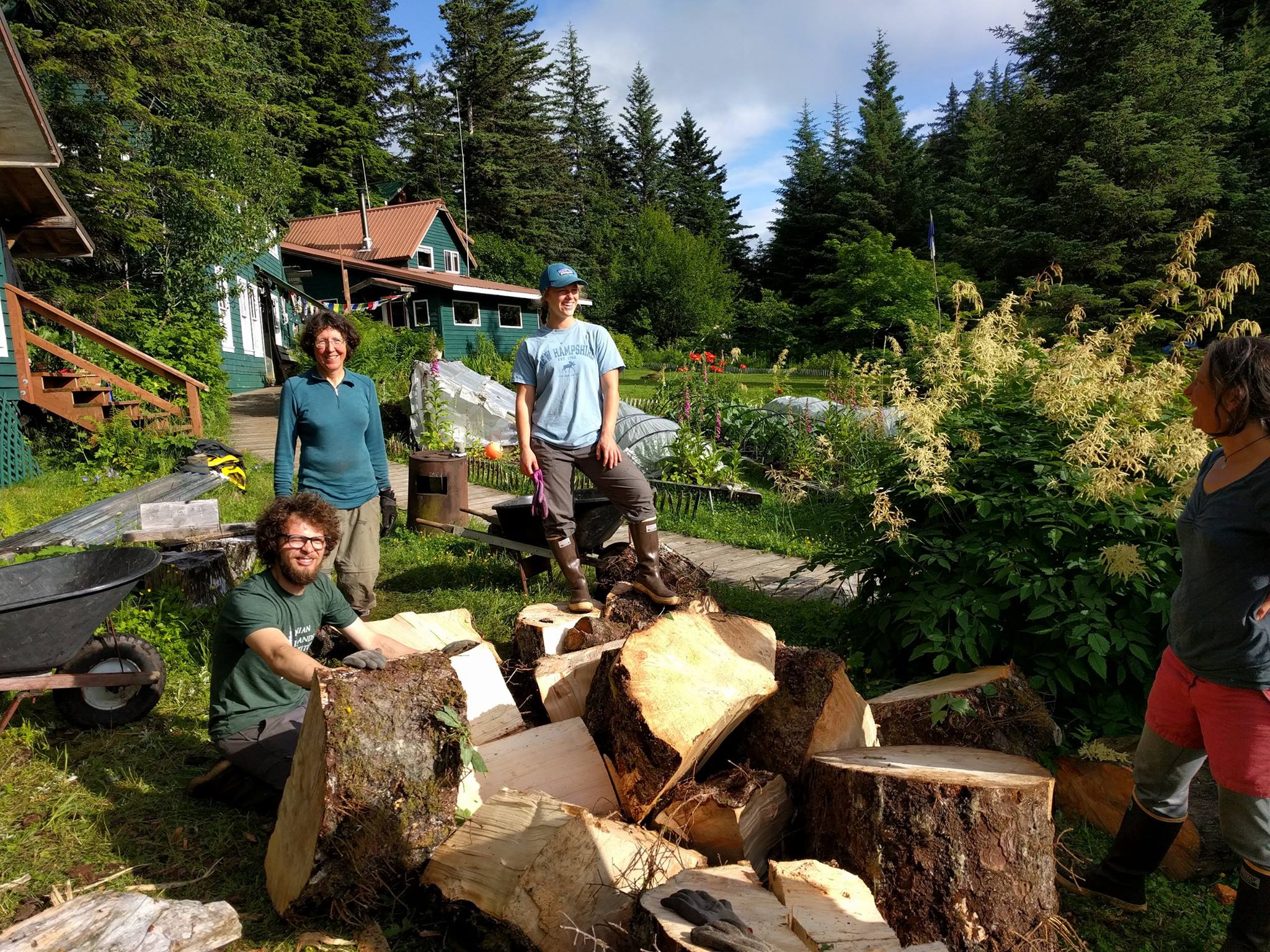
Notes from Magic Beach: small-town sustainability in southeast Alaska
By Madelyn Boslough, ’18 (Electrical Engineering)
Sea lions sang me to sleep in the dusky pink afterglow of a midnight sunset in southeast Alaska. Their bellows, echoing across the strait to my tent on Magic Beach, were surprisingly soothing, harmonizing with the gentle crash of tiny waves on gravel and kelp. The beach was aptly named. Each morning, I woke under a low ceiling of fog, obscuring the peaks of the Inian Islands and giving the whole place a mystical air.
Though I was born and raised in Alaska’s Wrangell St. Elias National Park, I had never spent time in the Southeast region of the state until I was awarded a Cardinal Quarter through the Alexander Tung Memorial Fellowship to serve with the Inian Islands Institute.
I was captivated by the beauty of the Institute’s location on a remote rainforest island off the coast of Gustavus, Alaska, and intrigued by its mission of inspiring youth to care about the environment by using experiential education. The Institute was founded by four Stanford PhD students, including the director, Zachary Brown, a recent PhD graduate in environmental science and fellow Alaskan.
The school intends to model sustainable living, and Zach offered me a position updating the Institute’s micro-hydroelectric system, which provided electricity to off-grid property. I was thrilled to take the lead on a project in small-scale renewable energy. I love Alaska with all my heart and have always intended to use my education to serve the environment and communities that shaped and supported me. I majored in electrical engineering to work in renewable energy and influence my state to rely less on oil and use more environmentally friendly technologies.
Over the course of the summer, I researched existing micro-hydroelectric systems in rural Alaska and began to plan a retrofit of the system on the island. I assessed the school’s present and future electricity demands, and the potential for incorporating other renewable energy sources like wind and tidal.
I was grateful for training in Stanford’s Principles of Ethical and Effective Service, especially preparation and humility. Preparation guided me through the tasks and challenges I expected; humility allowed me to navigate the inevitable unexpected tasks and challenges for which I had not prepared.
For example, on my first trip to the island where the Institute is based, I discovered that I would be closely working with a seasoned fisherman named Greg. Greg was a brilliant engineer without a college degree, who imagined, designed, and installed the micro-hydroelectric system on the island in the 1980s, long before terms like “renewables” and “microgrids” were heard in Alaska. He had done all this by corresponding with a Canadian hydroelectric manufacturer via handwritten letter, and with the help of a few good friends for the system’s actual construction.
Then, nearly 40 years of dependable renewable electricity later, I showed up to “fix” his ingenious but aging design. It took weeks for Greg to stop responding to my questions with a terse, “You’re the electrical engineer; you tell me.” Only by persistent, respectful questioning and listening was I able to earn his grudging willingness to help me.
Living in Gustavus was a profound civic awakening. An isolated town of only 400 people, Gustavus is an intimate place where everyone knows everyone, and every person plays a visible role in the social fabric. Just by arriving, I took on a role as well. My actions could affect everyone in town, and realizing this, everything I did took on a greater importance. I had a responsibility to the community of Gustavus, and by the end of the summer, I had made an impact. I left knowing that my actions make a difference and that I can be of real service to the Alaskan communities I love.
Working on small-scale renewable energy was a microcosm for the greater issues of climate change and planetary sustainability—a window into a wicked problem. Working with Zach, Greg, various handymen and community volunteers, and the Institute’s board of directors pushed me to understand how to work with a team with diverse expertise to tackle difficult problems. Through my fellowship I focused on the questions of what I want to do with my life and what kind of impact I hope to have on this world. I learned from Zach that a bias toward action is key—in the face of a terrifying, massive problem like climate change, the only thing to do is to choose somewhere to start, and do something.
Madelyn was one of 486 students who completed a Cardinal Quarter in 2017.
